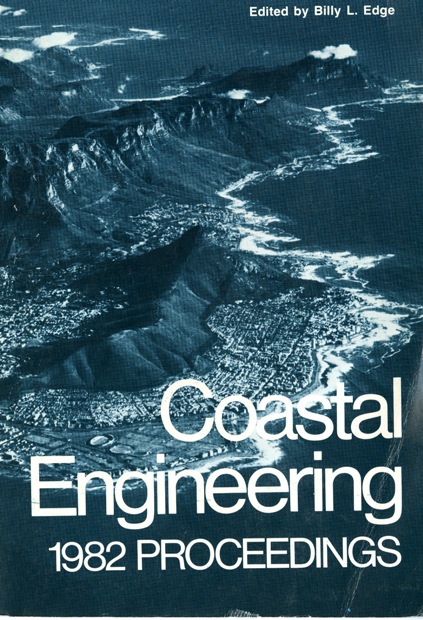Abstract
Wave diffraction and refraction in the surroundings of a new detached breakwater induce currents strong enough to cause substantial local sediment transport and consequently morphologic changes, the main feature of which are sand spits or tombolos. As shown by field studies the morphologic changes cause an equilibrium state with some minor fluctuations due to changing wave climate. Model studies have also proved the existance of such an equilibrium state for any given geometry and sea state The present paper treats mainly this equilibrium state, but also attempts to explain the mechanism of sand transport characterizing the initial and transitional states. According to observations by the authors in small scale models, the transporting mechanism in the transitional state involves sea bottom erosion, especially near the breakwater heads outside the protected area, and transport of sand towards the shore of the sheltered area in the form of small migrating sand bars, which finally join the shore line and widen it. Results of experimental investigations conducted by the authors, for the particular case of high impervious breakwaters attacked by waves of normal incidence, as well as results of field and model studies given by others, are used to define relationships among the factors determining the equilibrium state and to base a new hypothesis regarding the equilibrium state. This hypothesis states that a morphologic and sedimentologic equilibrium is reached behind a detached breakwater, when the shape of the contour lines becomes such, that along the sheltered beach the diffracted waves have components of momentum opposed to the gradients of the mean sea level induced by radiation stress due to non uniform wave heights along the wave fronts approaching from both sides of the breakwater. The significant parameters characterizing the dimensions of the spit or tombolo in the equilibrium state are shown to be the relative length of the breakwater (compared to its distance from the original shore line), the relative distance from the original shore line (compared to the position of the breakers' line) and the relative height of the breakwater crest (above M.S.L, compared to the incident wave height).
Authors retain copyright and grant the Proceedings right of first publication with the work simultaneously licensed under a Creative Commons Attribution License that allows others to share the work with an acknowledgement of the work's authorship and initial publication in this Proceedings.

